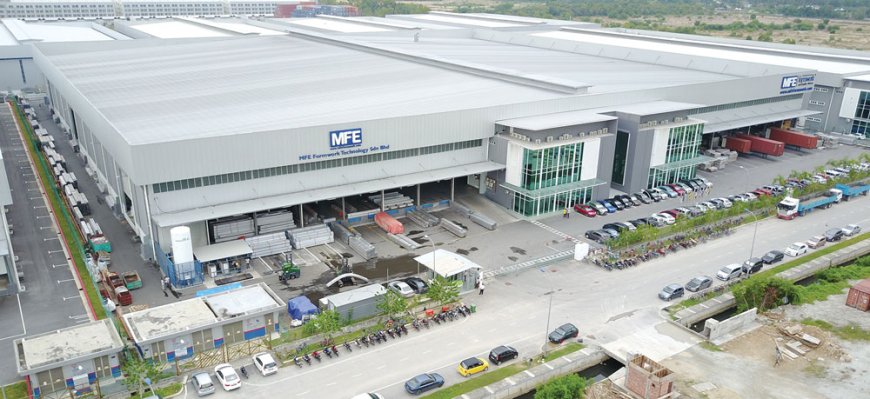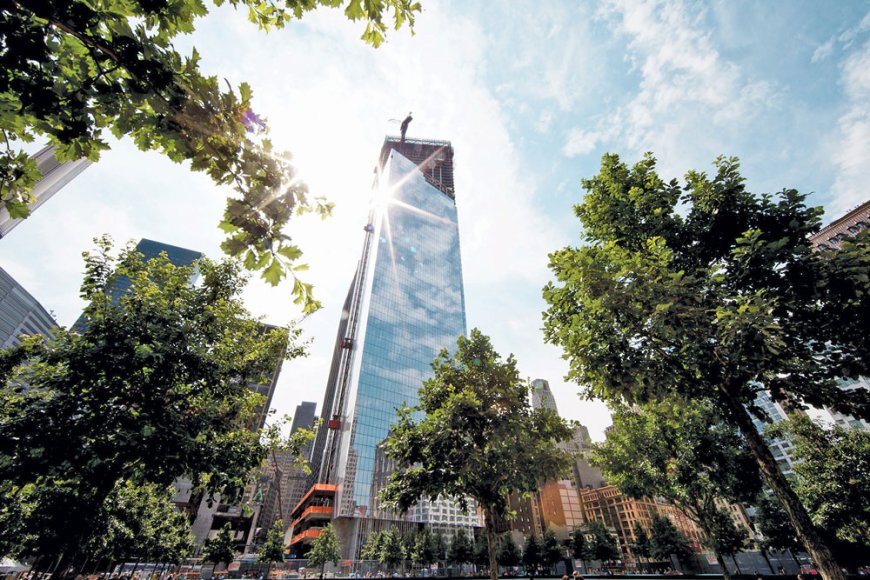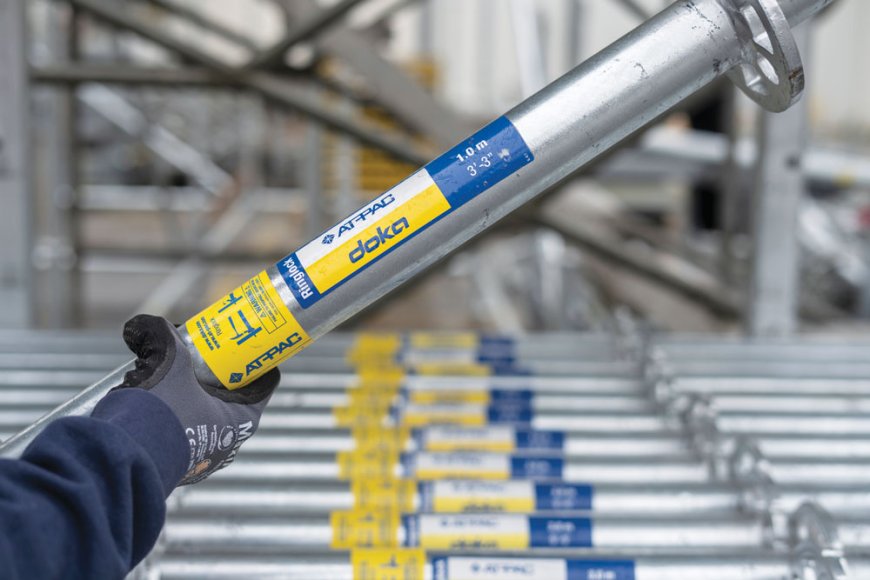Create inherently sustainable products

Construction, on the whole, had been a notoriously stagnant industry for around 40 years, only until about a decade ago. Since that time, the industry has experienced a dramatic shift in how formwork and scaffolding systems are designed, and more importantly integrated in the overall construction process.
Formworks
In terms of practical changes, the functionality of formwork remains largely the same, however, its design, assembly, capability, and life cycle have all been updated to reflect the latest industry challenges, as well as Doka’s steadfast commitment to transforming the construction industry towards a more sustainable path. Technology is another game-changer. Digital tools like BIM (Building Information Modelling) allow Doka to create 3D models for formwork, optimising material usage and ensuring a perfect fit. Sustainability is also at the forefront, as demonstrated through the introduction of lightweight, reusable formwork systems that reduce waste and environmental impact. Overall, the future of scaffolding and formwork is about smarter, safer, and more sustainable solutions – a future Doka India is proud to be a part of.

Scaffoldings
Since its strategic acquisition of AT-PAC, Doka has been able to extend economies of scale to its customers, in this case by offering convenience as a one-stop-shop for formwork and scaffolding solutions, resulting in a win-win for all parties. Following an extended period of collaboration, AT-PAC’s integration with Doka has meant customers around the world are able to benefit from highly durable scaffolding systems in conjunction with Doka’s existing formwork and engineering expertise, resulting in a more comprehensive output from one company.
As an additional benefit, AT-PAC’s digital development of products such as Hi-Vis® ensure real-time electronic information which is used to track scaffolding resources, labour and material deployed, resulting in an even more efficient mechanism for applying and controlling scaffolding and scaffolding-related resources on site.
Economic solutions
At Doka, we understand the relentless pursuit of efficiency in India's construction landscape. That's why our innovative formwork solutions are designed to be the cornerstone of economical project delivery.
Firstly, Doka formwork boasts exceptional reusability. Systems are engineered with durability in mind, lasting for multiple projects. This reusability significantly reduces waste and translates to cost savings compared to traditional formwork that's often discarded after a single, or only a few uses.
Secondly, Doka’s focus on speed and ease of assembly. Intuitive designs and user-friendly components allow for quicker construction and dismantling of formwork, freeing up workforces to focus on other crucial tasks.

Demand-supply scenario
The scaffolding & formwork market in India is experiencing a surge in demand, driven by a confluence of factors. Firstly, the government's ambitious infrastructure projects across sectors like transportation and energy are creating significant opportunities. Secondly, there's a growing focus on high-rise construction in major cities, requiring sophisticated formwork solutions.
With all that being said, it’s important to emphasise that customer needs are evolving. Today, contractors are seeking not just equipment, but complete solutions. They prioritise safety, efficiency, and faster project completion times.
Doka has recently achieved a significant milestone in its strategic growth plan with its recent acquisition of Malaysian-based MFE Formwork Technology, the market leader in monolithic aluminium formwork. MFE’s ability to deliver on less complex projects with repetitive geometric requirements has added a valuable dimension to Doka’s unique one-stop-shop product portfolio.
By staying ahead of trends and exceeding customer expectations, Doka India is well-positioned to provide India’s construction industry with the formwork, scaffolding and engineering standards expected of its infrastructure and high-rise projects, and beyond.
Sustainability initiatives
Innovation remains at the heart of Doka’s culture as a family-owned business. With over 150 years of heritage, Doka’s consistent attitude towards reinvestment in optimising its products remains as true today as it did when the company was founded.
Certainly, in terms of where Doka’s R&D is invested now, sustainable solutions are taking centre stage. Through its Product Carbon Footprint (PCF), Doka is using data-driven sustainability to measure the total greenhouse gas emissions (GHG) generated by its products across its relevant material life cycle phases. As a result, Doka is empowering clients to better understand their environmental impact, while offering ways to reduce their emissions by selecting more environmentally friendly products and systems. On the other hand, Doka is using the knowledge gained from the PCF in product development. This involves using advanced materials and reducing material consumption while maintaining the same load-bearing capacity. Doka's ultimate goal is to create inherently sustainable products that play a key role in achieving the company's net-zero emissions strategy by 2040.
Beyond materials, Doka is also at the centre of a digital evolution. Through products such as DokaCAD9 for AutoCAD and Doka’s award-winning, real-time, in-situ concrete measuring device, Concremote, Doka is ensuring a faster, safer and more efficient industry through a broad range of digital, made-to-measure solutions.
By embracing these advancements, Doka is not only delivering exceptional projects for its clients, but also shaping a more sustainable and efficient future for India’s construction industry.

Breakthrough solutions
Doka India is constantly innovating to provide its construction partners with the best possible formwork solutions. Doka’s forte is however, tackling some of the world’s most challenging projects, a good example being its work on the Dwarka Bridge. Here, Doka formwork and engineering solutions have successfully been used to deliver a 900-metre central cable-stayed bridge, including highway approaches. Spanning a length of 2.5 km, the 29.6-metre-wide, four-lane bridge includes 3.5 km of retaining walls, and a 1.42-km approach on either side. Comprised a composite deck and pylon structure, the total length between the two pylons stretches 500 metres, making it the largest span of any cable stay bridge in India. With the overall structure suspended by 76 cables, the most challenging aspect of the project was the design of the pylons which are curved along a vertical structure, at an angle of 20.1 degrees at the centre, 22.6 degrees to the left and 19 degrees to the right. As such, the formwork solution required a significantly tailored approach, while adhering to the strict engineering requirements of the completed structure. As part of the project’s product solution, Doka’s SKE50, SKE100, SKE100 plus, Top 50 and Shaft Platform were used throughout in order to support the timely execution.
Positive outlook
The Indian infrastructure sector is poised for significant growth, driven by government initiatives like Smart Cities Mission and National Infrastructure Pipeline. This translates to a positive outlook for Doka India, which sees a rise in demand for both, formwork, and scaffolding.
However, cost pressures remain a challenge throughout the industry. As a result, Doka is addressing this by optimising its product portfolio to offer cost-effective solutions without compromising on safety.
Looking ahead, digitalisation will remain a key trend. Doka is investing in BIM and digital planning tools to enhance project efficiency and safety for its clients. By staying ahead of these trends, Doka India is well-positioned to be the leading partner for India’s construction industry as it navigates the exciting opportunities and challenges within the market.







